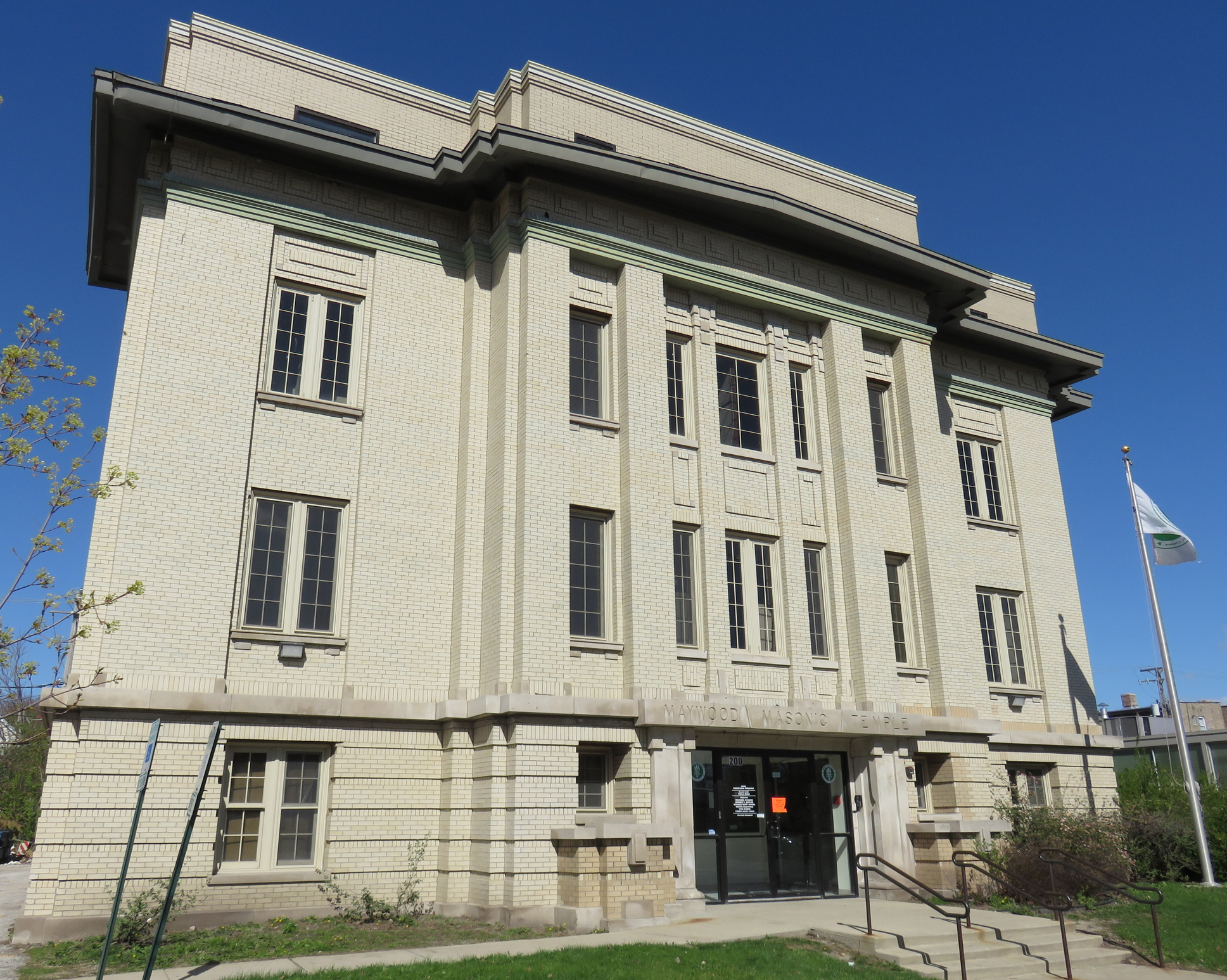Analysis of Financial Burden in the City of Maywood, as part of the Cities Addressing Fines and Fees Equitably (CAFFE) Initiative.
Background
The Village of Maywood, Illinois, as part of their participation in the National League of Cities’ (NLC) Cities Addressing Fines and Fees Equitably (CAFFE) Initiative cohort, reduced the impact of late property tax fines and fees on residents. Led by Mayor Nathaniel Booker and his team, state legislation to put in place payment plans for property taxes was introduced, and $15,000.00 in late property taxes were paid to help underserved Maywood residents keep their homes. This access to pay assistance was crucial for Maywood residents, as the village now faces many changes in demographics that are impacting housing and property tax costs, placing many residents at risk of entering a cycle of debt.
To support this effort, NLC utilized public Census data and a financial burden model to identify key characteristics of those who would be disproportionately impacted by fines/fees and therefore benefit the most from reform. By conducting this analysis, NLC uses a data driven approach to paint the picture of financially burdened households, and both validate and challenge existing assumptions.
Findings
In the Village of Maywood, the burden model highlighted that 19% of homeowner households would be overly burdened and unable to pay the average property tax fine and fee after missing one payment. With an average household disposable income of $4000/month, a fine of $3000 or more can negatively impact these residents and their community.
The model also highlights some key characteristics of the burdened population such as:
Residents that have recently moved to Maywood and those that have lived in Maywood for more than 30 years are most likely to face fine-related burdens.
One-Third of Households Burdened by Fines Moved to Maywood Within 2-4 Years
DISTRIBUTION OF HOUSEHOLDS BURDENED BY FINES, BY WHEN THEY MOVED TO MAYWOOD
Note: Data shown here is sourced from the PUMAs which overlap with the Village of Maywood including portions of PUMAs which may also exist outside the city limits. Households Burdened by Fines are those in which their fines are more than 80% of their disposable income. Due to data limitations, it was not possible to link assessed fines to specific households, and the statistical analusis therefore assumes the size of a fine and a household’s income are not related though this may not be true for all fines.
Residents between 40 and 59 years old and with less formal education face greater burden from fines and fees.
Individuals Burdened by Fines Are More Likely to be 40 Years Old or Older Than Individuals Overall
DISTRIBUTION OF INDIVIDUALS, BY AGE GROUP AND FINE BURDEN
Note: Bars may not add up to 100% across groups because individuals below 18 have been excluded. Data shown here is sourced from the PUMAs which overlap with the Village of Maywood, including portions of PUMAs which may also exist outside the city limits. Individuals Burdened by Fines are those in which their fines are more than 80% of their disposable income. Due to data limitations, it was not possible to link assessed fines to specific households, and the statistical analysis therefore assumes the size of fine and a household’s income are not related though this may not be true for all fines.
Individuals Burdened by Fines Are Less Likely to Finish Higher Education
DISTRIBUTION OF INDIVIDUALS, BY EDUCATIONAL ATTAINMENT AND FINE BURDEN
Note: Bars may not add up to 100% across groups because some categories, like “Other,” have been excluded for improved clarity. Data shown here is sourced from PUMAs that overlap with the Village of Maywood, including portions of PUMAs that may also exist outside the city limits. Individuals Burdened by Fines are those whose fines exceed 80% of their disposable income. Due to data limitations, it was not possible to link assessed fines to specific households; therefore, the statistical analysis assumes that the size of a fine and a household’s income are unrelated, although this may not be true for all fines.
Burdened households are more likely to have limited resources at home, and access to public resources may be hindered due to a lack of a cellular data plan or inadequate internet access at home.
Households Burdened by Fines Are Less Likely to Have a Cellular Data Plan Than Households Overall
DISTRIBUTION OF HOUSEHOLDS, BY POPULATIONS FACING BARRIERS AND FINE BURDEN
Note: The data shown here is sourced from the PUMAs that overlap with the Village of Maywood, including portions of PUMAs that may also extend outside the city limits. Households Burdened by Fines are those in which their fines are more than 80% of their disposable income. Due to data limitations, it was not possible to link assessed fines to specific households; therefore, the statistical analysis assumes that the size of a fine and a household’s income are unrelated, although this may not be true for all fines.
Conclusions
These findings highlight the importance of legislation and programs to help residents make payments through payment plans, help break the cycle of debt and not lose their housing. Without these interventions to support households, a fine could potentially trigger a cycle of debt. Adjusting fines, providing financial literacy services, and establishing payment plans to reflect the ability to pay represent an equitable solution for residents who would otherwise be financially burdened.
Methodology
The data set used in this analysis encompasses multiple variables related to social, economic, housing, and demographic characteristics of the U.S. population. Utilizing the 2018-2022 5-Year American Community Survey (ACS) Public Use Micro Data Sample (PUMs), we can calculate the disposable income of households by subtracting housing and utilities costs from the household income. Based on the ACS, we utilized the following variables for calculating housing and utilities costs: Condo Fees, Electricity, Fuel, Gas, Home Insurance, Mobile Home, Mortgage, Property, Rent, Taxes and Water.
In Maywood, the average property tax fine and fee for missing one payment is approximately $3,000. By dividing this amount by the household disposable income for each unit in the dataset, we calculated the financial burden as a percentage of the monthly disposable income. Notably, this model assumes that fines and fees are assigned equally, regardless of household income.
We can then sort houses into five cohorts based on the percentage. Households in the highest range (80%-100%) are defined as “Extremely Burdened”.
For this analysis, we limited the dataset to resident homeowners since they would be the most directly impacted by increasing property taxes and associated late payment fees.
Learn More about CAFFE
City governments can be champions of strengthening financial security for families through reimagined debt collection practices, equitable ability-to-pay processes and increased access to financial empowerment services. Learn more about Cities Addressing Fines and Fees Equitably on our initiative page.







